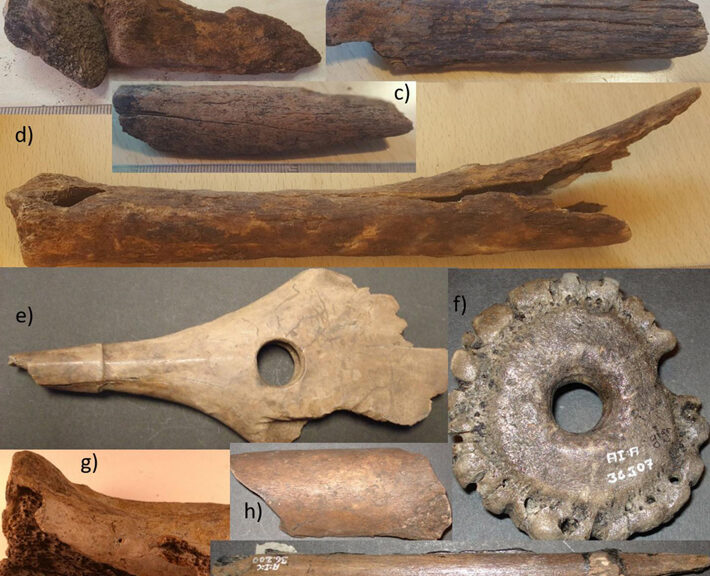Ancient bones in disturbed peat bogs are rotting away, alarming archaeologists
LUND, SWEDEN—According to a Science Magazine report, researchers led by Adam Boethius of Lund University found that preservation conditions at a Mesolithic site in southern Sweden have deteriorated significantly in the 75 years since excavations first began there.
Ageröd is one of many peat bog sites whose anaerobic conditions have preserved bone, teeth, antler fragments, and other artifacts for more than 8,000 years.
The wrinkles on the face of “Tollund Man” are still visible, even though he died more than 2,200 years ago. The mossy wetlands in Denmark that mummified his body are ideal for preserving organic matter, giving archaeologists an extraordinary window into our distant past. But a recent excavation at a similarly boggy site in Sweden shows these perfect conditions are fragile, and when they break down, so, too, do the bodies, bones, and other organic remains that have been preserved for centuries.

The finding suggests a long-standing tenet of archaeology—avoiding excavation and leaving artifacts in the ground for long-term preservation—needs revisiting, at least for some wetland sites.
Anecdotal evidence has long suggested the condition of remains excavated from wetlands like peat bogs is declining, says Benjamin Gearey, a wetland archaeologist at University College Cork who was not involved with this study. For example, bone deterioration has been documented at Star Carr, an archaeological site in northern England. But it’s been hard to know how widespread the pattern is–and how fast the decay is occurring.
Ageröd, a peat bog in the south of Sweden that holds bones, antlers, and other artifacts from Mesolithic cultures that flourished more than 8,000 years ago, is a good place to measure the pace of decay in a peat bog, says Adam Boethius, an archaeologist at Lund University.
Boethius and his colleagues compared bones freshly excavated in 2019 with bones that had been exhumed from the bog in the 1940s and 1970s and stored in the Lund University Historical Museum. They rated the weathering of each bone, from well-preserved ones—those that were shiny and crack-free—to dull bones with worn outer surfaces.

The bones from the 2019 excavation were so weathered that their scoring system broke down. Some had lost more than half a centimeter of their outer layer.
Other sections of the site where they expected to find remains yielded no bones at all, suggesting they had entirely decomposed. The best-preserved bones from the 2019 excavation were in roughly the same condition as the worst-preserved bones from the 1970s, they write today in PLOS ONE.

They found that deterioration was already underway in the 1970s. Bones from these excavations were more weathered than those excavated in the 1940s. What’s more, the same pattern with the 2019 bones appeared: The best-preserved 1970s bones were in a similar condition to the worst preserved 1940s bones.
The culprit is oxygen, the researchers say. Organic material trapped below the mossy surface of intact peat bogs is starved of oxygen, creating an environment too hostile for the fungi and bacteria that would normally break down plants or bones. But with excavation comes oxygen, which reacts with buried iron sulfide to produce sulfuric acid.
Another factor is a farming activity, which has slowly drained the wetland, damaging the protective surface and allowing oxygen in. It’s very likely that the groundwater in the whole area has become more acidic, Boethius says.
This means bones soaking in deep, wet layers will be rapidly destroyed. The increasing frequency of extreme weather events induced by climate change—including both droughts and floods—may also contribute to the problem, he adds.
The study is “sobering,” and demonstrates the “catastrophic loss of irreplaceable organic archaeological remains” in wetland sites across Europe, Gearey says.
It also highlights how important it is for researchers to better understand preservation and decay and raises questions about the default strategy of preserving remains in the ground, says Reading University archaeologist Martin Bell.
“If you can’t preserve it in the ground, you have to dig it up,” Gearey says. With poor understanding and monitoring of the conditions of wetland sites, leaving the treasure in the ground at sites like Ageröd is not an option for Boethius. “We need to excavate now,” he says. “If we wait for 10 or 20 years, everything will be gone.”
